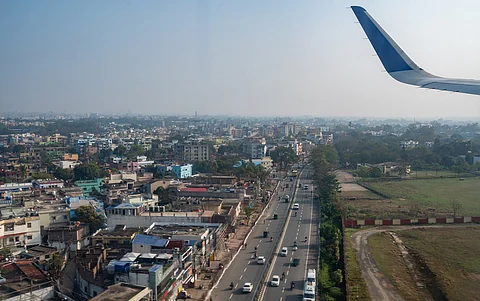

“These city buses have been parked on the roads for many days as there is no dedicated place to park them within the state capital,” Pappu Pandey made a telling remark while pointing to the damaged buses parked at Naga Baba Khatal near Kachhari More in Jharkhand’s capital.
The Ranchi general secretary of the All Drivers Welfare Association added that the traffic system in the city has collapsed.
Ranchi was among the top 20 cities selected in the first phase of the Centre’s Smart City Mission in 2016. Nearly a decade later, the capital is facing a shortage of city buses.
“There are around 41 city buses operating in Ranchi at present,” district transport officer Akhilesh Kumar told Down To Earth (DTE). However, not only is there a dearth of buses on the roads, but locals also report of there being only 24-25 buses in the city at the most which ply on limited routes.
The 2011 Census of India reported the total population of Ranchi as being 29,14,253. However, according to the Comprehensive Mobility Plan (CMP) prepared by the Institute for Transportation and Development Policy for Research Mobility Partnership (ITDP) in July 2015, the total urban population in the Ranchi Municipal Corporation area is 1.46 million.
Ranchi’s population increased at the rate of 30 per cent between 2001 and 2011. This number is expected to be even higher now.
Are 41 buses sufficient for a population of 1.46 million? There is no uniform set criterion to decide the number of buses that cities need. Different conventions have been followed.
There should be a minimum of 40 buses per one lakh population for cities with a population of 50,000 to four million, according to a policy advice prepared as part of the Jawaharlal Nehru National Urban Renewal Mission (JNNURM) under the Government of India’s bus promotion programme.
For megacities with a population of more than four million, there should be a minimum of 50 buses per one lakh population.
As per this advice, there should be 580 city buses in Ranchi to serve its 1.46 million population. This standard will be met only when 539 buses are made available for the city.
According to a corporation official, the state cabinet had approved 244 new city buses for Ranchi on March 27, 2023. Administrative approval was given for this to a scheme of Rs 605 crore. Under this, 220 non-AC diesel buses and 24 AC electric buses are to be purchased. Tenders have been issued five times so far. But the city is yet to get these buses.
At the same time, local residents say that not only are there not enough city buses for movement in Ranchi, but there is also no place to park them.
DTE found that there is no parking facility for city buses in Ranchi. Even the stretch from Ranchi’s railway station to the government bus depot is jammed for hours and movement remains obstructed due to e-rickshaws and autos, along with cars of private cab companies that line it.
Such is the shortage of space at government bus depots that buses are often parked on the roads. Due to the narrow roads, pedestrians and cyclists have to face problems.
According to the corporation, there are 31 official parking sites in the city. However, local citizens said the city needs twice as many parking slots in busy areas like Main Road, Lalpur and Kachhari.
A fleet of private buses from neighbouring cities enter Ranchi daily. Local residents are troubled by their arbitrary and expensive fares.
Nitish Kumar, who works in a private company, lives in the Lalpur area. He told DTE that the city buses available, do not cover important places. For example, whether it is Sadar Hospital or Medical College or going towards Kachhari Road, they are not available on all routes. It is very expensive to travel the city through private public vehicles like auto rickshaws and e-rickshaws. For instance, traveling about 10 kilometres (km) from Boonti Modan to Sadar Hospital can cost up to Rs 150. This is almost half the cost of a day’s labour.
Cycling is still a common practice in the city. However, there is no cycle track for cyclists. Computer operator Rajesh Kumar said he travels 20 km daily to work in the city by cycling. There is neither a stand nor any security. By doing this, he saves Rs 150-300. But he is always at risk of accidents.
The registration figures for public transport and private two-wheeler and four-wheeler vehicles in Jharkhand in the last five years (2021-2025) show that the number of private vehicles has increased very rapidly, while the growth of public transport like buses and three-wheeler passenger vehicles has been comparatively limited.
E-rickshaw registration along with private two-wheelers and four-wheelers has increased five times in the last five years (2021-2025). The registration of motorcycle scooters in the last five years (till 2021-25) was 15,56,006. The registration of motor cars also increased tremendously in the last five years, with a total of 249,700 cars being registered.
Motor cabs and motorised cycles (cc>25cc) have also reached millions. E-rickshaws have increased by 558.16 percent in just four years. According to the VAHAN database, the total number of e-rickshaws in 2021 was 1,871, which increased to 12,315 in 2024.
This article is part of our series on how India moves, which looks at the relationship between air quality and human mobility in cities and towns.